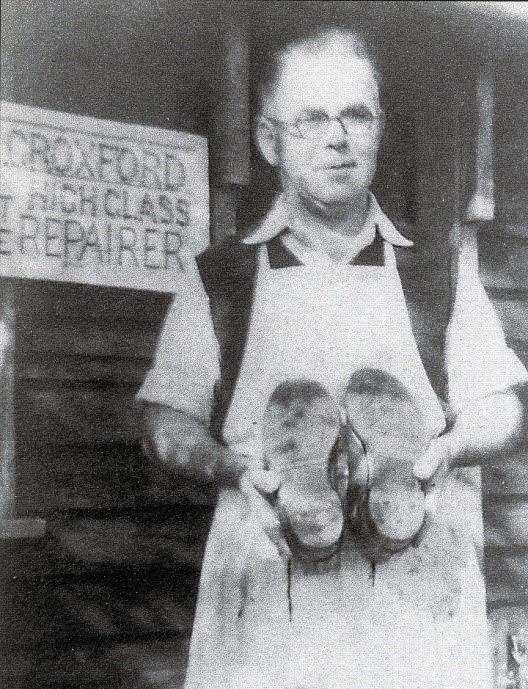
by Joy Horn // Main Photo: Charles Croxford, boot and shoe repairer (Cranleigh Voices, comp. Seymour and Warrington (2000))
Charles Herbert – or Charlie – Croxford (1896-1977), later a well-known Cranleigh figure, with a boot and shoe repairer’s hut on the Common, left some graphic reminiscences of his life here before the First World War. These are some of his memories of the Village School.
The Croxford family came to Cranleigh from Northamptonshire in 1904, when Charles was aged 8, and settled in East View, between the High Street and the railway (now the Downs Link Path). From here, he walked daily to the village school, near the obelisk (just under a mile), together with children living nearby. ‘We soon found that hoops and skipping ropes, or even a blacking-tin with a hole in the centre and string through it, helped to get us there swiftly.’
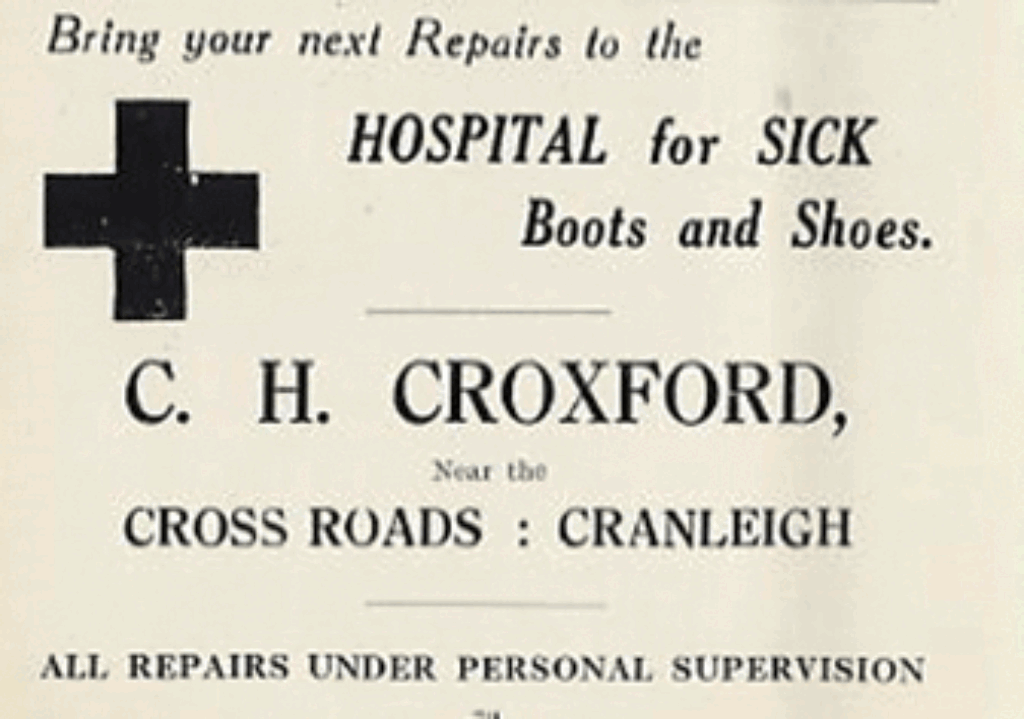
There were three classrooms in the sandstone building. To encourage regular attendance, ‘we were presented with “Never absent – Never late” picture postcards for each completed week. Bronze medals were awarded for a complete year without a break, but as childish ailments were frequent there were not many who qualified.’
There was a strong emphasis in the school on Reading, Writing and Arithmetic. Paper was scarce ‘and we used slates with scratchy-screechy slate pencils for writing and sums. When the slates were filled they had to be washed or rubbed off. It was not unknown for them to be licked – and wiped with a sleeve!
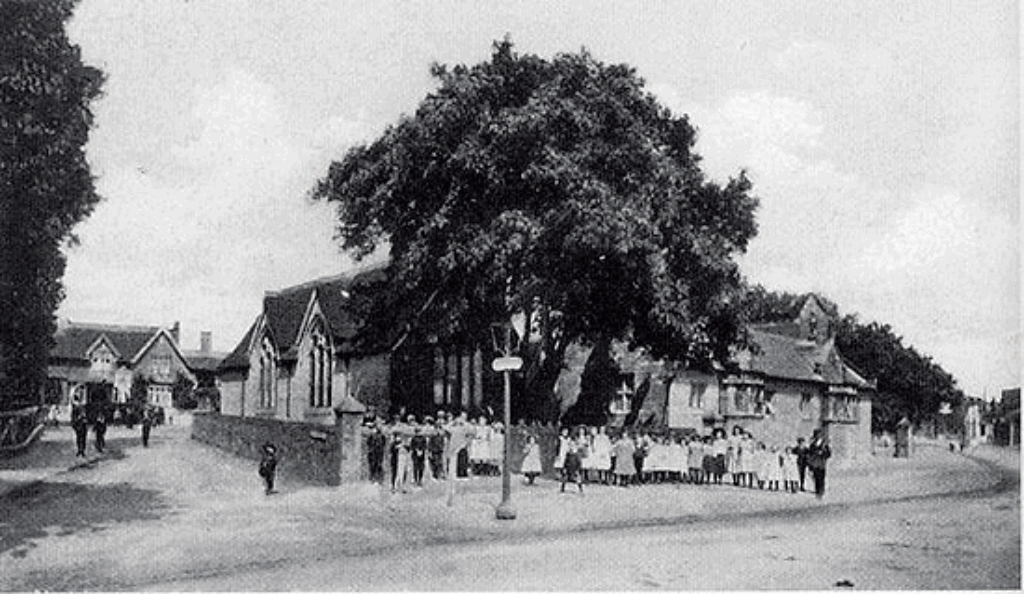
‘If a pupil showed outstanding ability in any subject, he or she would be moved up a place or two in the class. On one occasion I was moved to the top of the class for reading. Alas! This did not last very long, for in our next reading lesson I came across a word which I had never seen before. Not wishing to reveal my ignorance, I boldly pronounced it as “fattygew” (fatigue)! I was immediately sent to the bottom of the class – with a painfully boxed ear. My pride was very hurt.’
On Friday afternoons there would be a little relaxation of the strict learning regime. ‘Our teacher would give us a treat by reading aloud, while we sat with our arms folded behind our backs!’ Try it: it is incredibly uncomfortable, even for a short period. Nevertheless, the story of Rumpelstiltskin, with his curious name, remained firmly imprinted on Charlie’s memory.
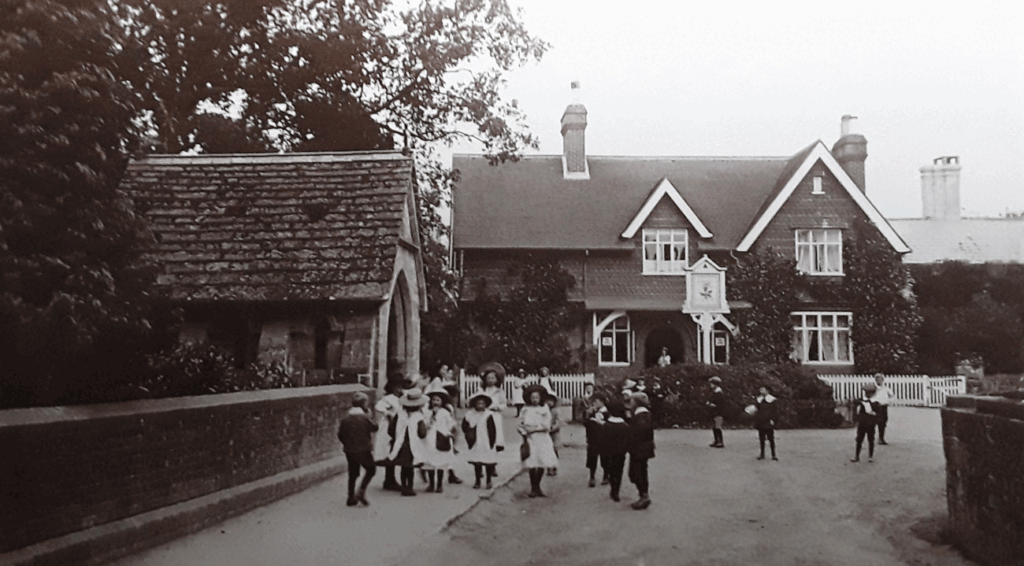
At the midday ‘break’ the children were able to play in the field where the infants’ school, fire station, church hall and offices now stand. They enjoyed playing cricket, ‘using home-made bats, gutta-percha balls and bean-stick stumps’. If they had any pocket money they could buy refreshments at the Lady Peek Institute, a gentlemen’s club next to the school. A cup of cocoa or milk cost a halfpenny. Other goodies were brandy snaps, currant buns and doughnuts.
In 1902, Empire Day replaced the celebration of Queen Victoria’s birthday on May 24th. ‘The whole school paraded in front of Belwethers and sang patriotic songs, including “Rule Britannia” and “Flag of Britain”. The Union Jack was hoisted, and when we came to the line “We salute thee and we pray”, the boys doffed their caps and the girls curtseyed. A school governor addressed us and we each received an orange (fruit of the Empire) and the school was given a half-holiday.’
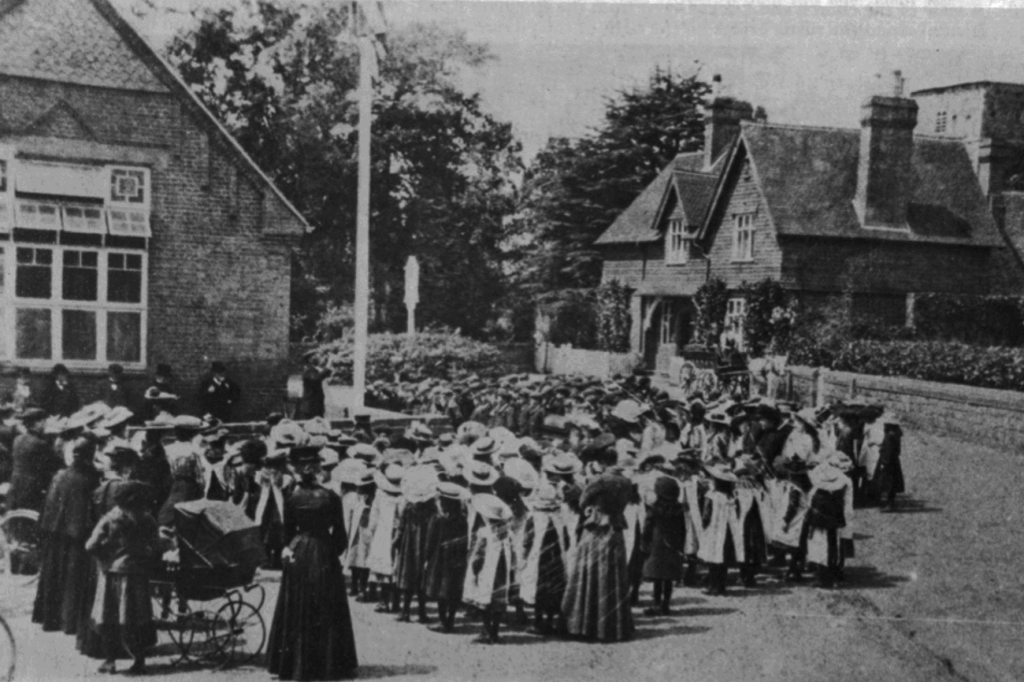
Another special service was held on Ascension Day at Lord Justice James’s Seat on Winterfold. The children walked there with their teachers and the rector, the Revd. Peter Cunningham. Afterwards, the children were again given a half-holiday. Some of them would bring lunch with them and enjoy an afternoon of fun in the Surrey Hills. They would ‘get “lost” and arrive home in time for bed, with the yarn, “Some gypsies chased us, Mum!”’
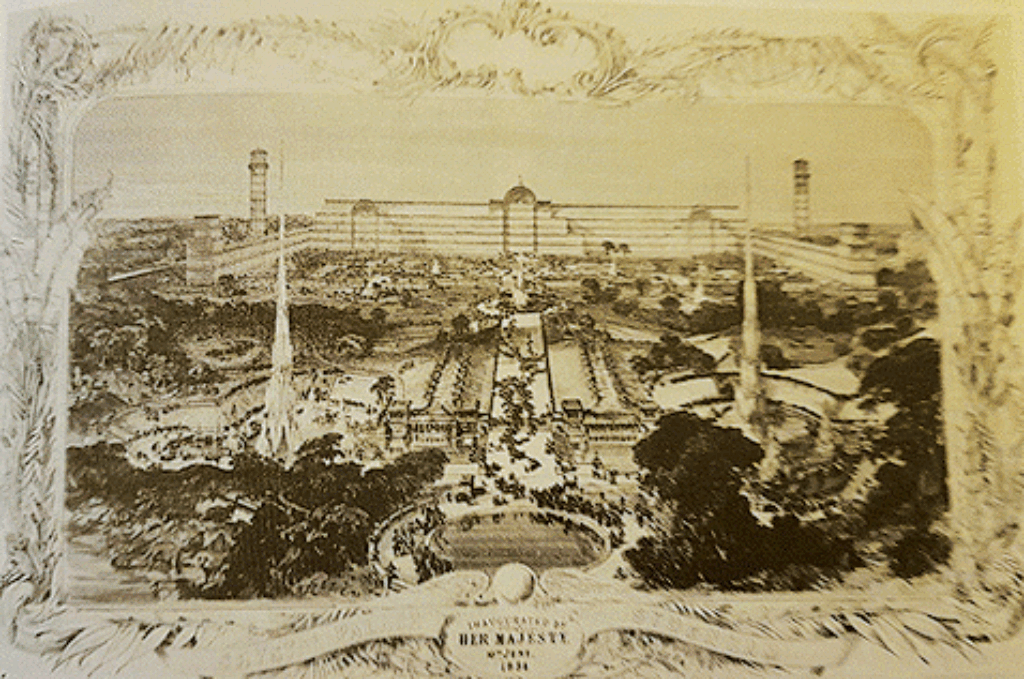
It comes as a surprise to learn that schoolchildren of the period before the First World War were taken to London each year on an educational trip, to the British Museum, the Tower of London and ‘the Crystal Palace (in Sydenham) with its long glass dome and twin towers, one at each end’. This was possible because they went by railway, and then by ‘horse-drawn coaches past many places of interest. It was an occasion to be remembered. Next day we would write an essay about it.’
When Charles left school at 13, he worked for three years at Rydinghurst in Elmbridge Road as the ‘house-garden boy’, doing odd jobs. After that he became an apprentice to Charles Crick at the Northampton Boot Stores in the High Street and learned the skill of shoe-repairing.
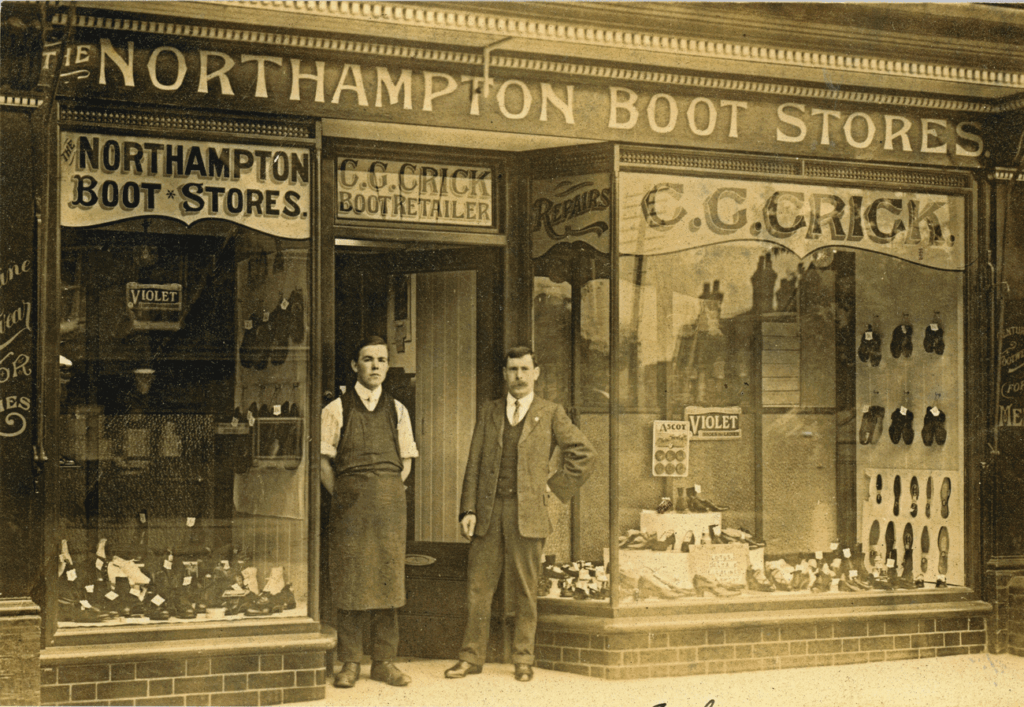
(With grateful thanks to Pat Miller for showing me this memoir, which she typed for the family of Charles Croxford senior in 2016.)
The Cranleigh History Society meets on the second Thursday of each month at 8pm in the Band Room. The next meeting is on Thursday March 14th, when Judith Grants will speak on ‘From Armada to Abdication, illustrated by items from a personal collection’. Visitors are welcome.











